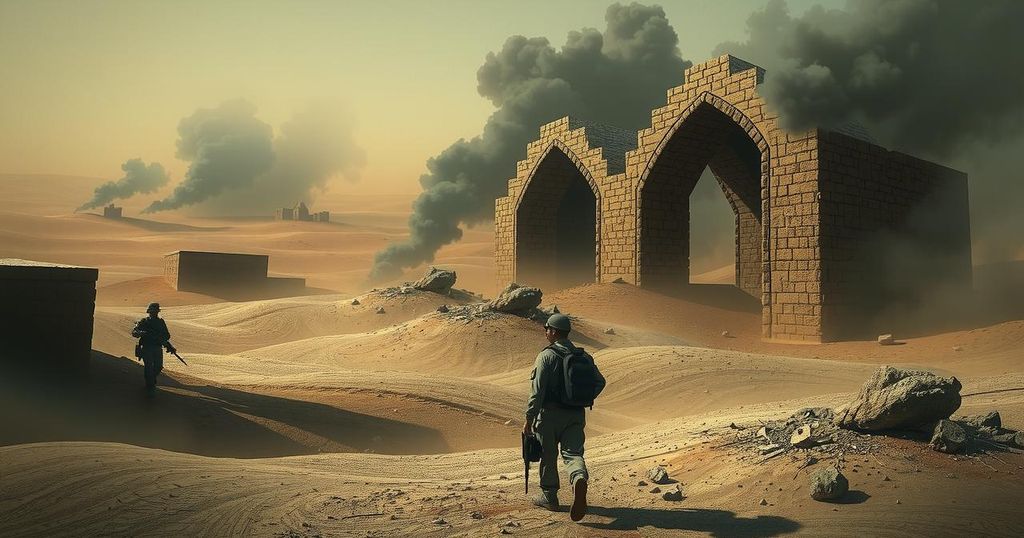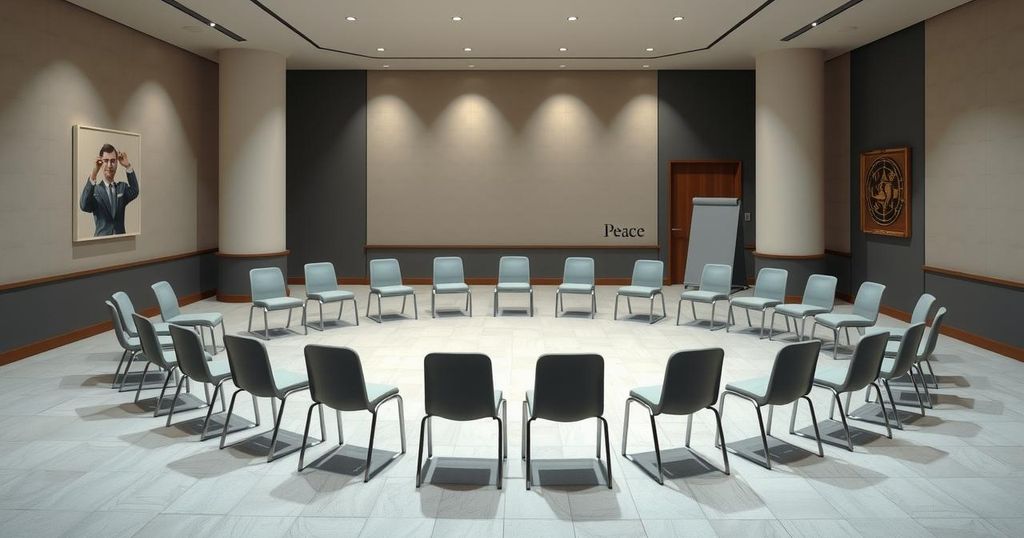The article discusses a security operation executed by the Syrian Ministry of Interior against Hezbollah cells in Sayyidah Zainab, highlighting escalated tensions between the Iranian regime and Syrian authorities. The report outlines the implications of Iranian military interventions and Hezbollah’s ongoing role in Syria since 2011, emphasizing the importance of these dynamics in regional stability.
A recent report by the Syrian newspaper Thawra, dated March 28, 2025, reveals a significant security operation undertaken by the Syrian Ministry of Interior aimed at Hezbollah cells in the Sayyidah Zainab area of Damascus. The Rural Damascus Security Directorate announced on March 27 that these cells were apprehended while plotting “criminal operations” to destabilize the region. Visual evidence from media sources illustrates the arrest of three individuals during this crackdown.
The situation indicates rising tensions between the Iranian regime and Syrian authorities, as an accusation from the Syrian Ministry of Defense alleged Hezbollah operatives’ infiltration into Syria, resulting in the death of three soldiers from the newly-formed Syrian army. This development occurs in the context of increasing scrutiny concerning Tehran’s influence in Syria, which has been a critical issue since the onset of the Syrian conflict in 2011.
Thawra’s report affirms that the Iranian regime has employed both direct military operations and proxy groups like Hezbollah to retain its strategic presence in Syria. Hezbollah has notably played a crucial role in key engagements, including the 2013 battle of Qusayr. Furthermore, the Quds Force of the Islamic Revolutionary Guard Corps (IRGC), particularly under the late Qassem Soleimani, has been instrumental in supporting the Assad regime through military training, intelligence, and quelching anti-regime protests.
The article emphasizes that Iranian involvement in Syria transcends Hezbollah’s contributions. There is a record of direct IRGC engagement since the conflict’s inception, with estimates of over 2,100 IRGC personnel fatalities reported by March 2017. The article references Iran’s alleged complicity in the Assad regime’s deployment of chemical weapons, including the 2013 Ghouta attack that resulted in numerous civilian casualties, asserting that Iran, along with Russia and Hezbollah, has been crucial to these military efforts.
Additionally, the report outlines how the Syria-Lebanon border has emerged as a significant corridor for Hezbollah’s illicit activities, including arms and drug trafficking, purportedly coordinated by Iranian forces. This 375-kilometer border has recently witnessed heightened conflict, with multiple accounts of Hezbollah’s involvement in cross-border operations reported.
The conclusion of the Thawra report highlights that the Iranian regime’s persistent interference in Syria—be it through direct military actions or via proxies like Hezbollah—remains a pivotal factor influencing regional stability and security. The crackdown on Hezbollah in Sayyidah Zainab illustrates the ongoing discord between Tehran and Damascus regarding Iran’s influence in the area.
Moreover, the Iranian clerical regime has mobilized IRGC personnel alongside the Zeynabiyoun and Fatemiyoun brigades to Syria since the uprising commenced in 2011. This mobilization has been ostensibly justified as a protective measure for the Sayyidah Zainab holy site against perceived threats from Salafi and Sunni insurgents. Nonetheless, reports indicate that the current Syrian government has since assumed the responsibility for the security and preservation of the Shiite site after the Assad regime’s ousting.
In summary, the Thawra report sheds light on the ongoing tensions between Iran and Syria concerning the activities of Hezbollah and Iranian forces within the region. It illustrates a larger narrative of conflict, illustrating Iran’s strategic maneuvers to maintain its influence in Syria through both support and direct military involvement, coupled with relevant implications for regional security.
Original Source: www.ncr-iran.org




